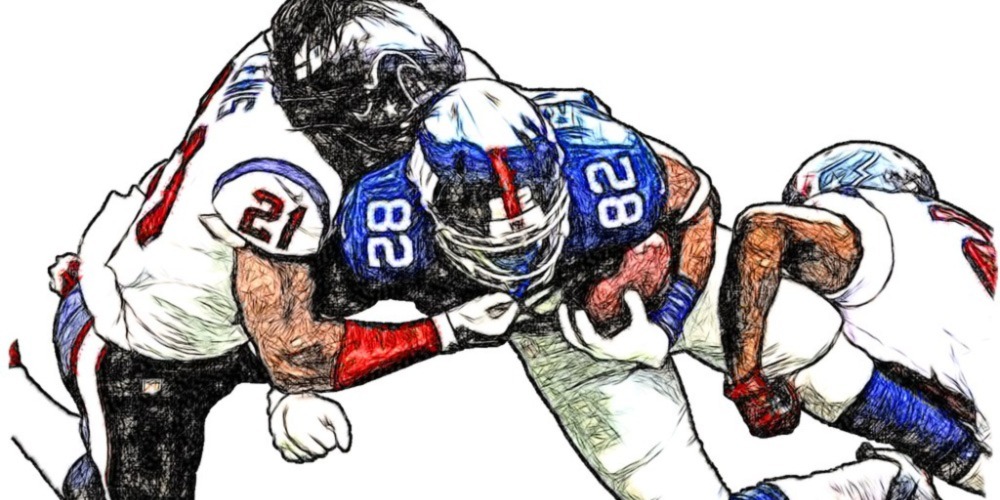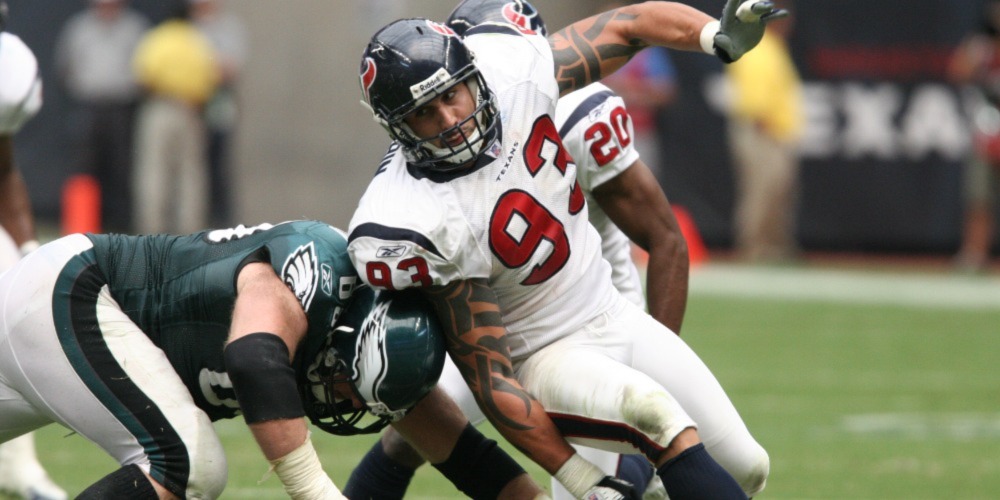Common Brain Disease In The NFL – Don’t Underestimate The Danger
Posted: July 19, 2022
Updated: July 19, 2022
-
What is CTE?
-
What does the research say about it?
-
How to recognise it?
-
Check out the common brain disease in the NFL!

American football is a rough sport. The players tackle each other daily, inadvertently hurting their heads where their skulls take strong blows throughout their career. Years of hits take a toll on the brain and, according to research, it slowly gets destroyed. A scary study revealed that out of 111 deceased professional NFL players, 110 were diagnosed with chronic traumatic encephalopathy. Let’s see the common brain disease in the NFL!
The NFL players fall and crash into each other for the sake of the game. You can even place bets on them at 888sport! These actions are spectacular, but some of the damage is not visible. Many love the sport as Super Bowl is one of the most-watched events in the world. However, many consider the athlete’s modern-day gladiators, which sounds right after the study. It seems that they do not leave the arena without consequences. The NFL is famous for many things, like scandals. Check out the dirtiest NFL players!
Brains tissues of 202 deceased American football players were donated by their families to the research program. It aimed to find out how common CTE, or chronic traumatic encephalopathy, is among those who play this sport. They can only detect the disease after someone passes away through an autopsy, but based on its numerous symptoms, it becomes obvious who suffers from it while they are still alive. Out of the 202 brain tissue examples, 111 came from professional players, so from the NFL. Of those 111 people, 110 had CTE, so it’s a pretty common brain disease in the NFL.
Common Brain disease in the NFL
After seeing the results, some experts emphasized that the number of people suffering from CTE may be lower than the study suggests. As the relatives may have offered the bodies to the program precisely because they suspected something while the athletes were still alive. However, assuming that something was wrong was not required for the research. The only requirement was that the person played American football for a while, even if it was only for a few years in college.

So not everyone had to be a professional player. Out of the 202 players, 177 were diagnosed with CTE after the brain tissue analysis. As we have mentioned, among the 202 players, 111 were professional NFL athletes. Based on the brains of 14 high school players, three showed CTE. Out of 53 college players, 48 had CTE. These results and data can be overwhelming, considering how many young athletes were among them.
What is CTE?
CTE is a neurodegenerative disease caused by repeated trauma to the brain, which is a common brain disease in the NFL. The tau protein accumulates abnormally in the brain, paralyzing the nerve pathways. There are four stages to CTE, depending on how severe the accumulation of tau proteins is.
Phases 1 and 2 are still mild, but phases 3 and 4 are already alarming. The symptoms are varied. The patient may experience memory loss, confusion, aggression, anxiety, depression, decision-making problems, and impulsive behavior.

All of which could lead to suicidal thoughts and eventually suicide. These symptoms appeared for 96% in the mild category and 89% in severe cases. This is surprising since you would think the symptoms were more consistent in severe cases. However, patients with milder cases of tau protein accumulation are more likely to end their lives. Memory loss is more common in more severe cases.
The doctors also took into account the medical records of the persons, not just the pathological changes in their brains. The brains of famous players have also been analyzed, such as Ken Stabler, 69, Kevin Turner, 46, and Bubba Smith, known as Hightower from Police Academy died at the age of 66. You can check out the list at online sportsbook sites in the US!
Common brain disease in the NFL
In 2016, the NFL publicly acknowledged a connection between American football and the common brain disease in the NFL. In 2015, thousands of former NFL players demanded compensation and filed a lawsuit. The NFL paid $ 5 million to each retired player exhibiting severe symptoms. The organization even donated $ 100 million to support neurological research so doctors can better understand the disease.
The analysts of the research emphasized the fact that the results may send the wrong message. If the players, either professionals or amateurs, think they are as good as dead and can’t be helped, they are wrong. It’s crucial to raise awareness of the treatments. If someone experiences the listed symptoms, they should go to the doctor as soon as possible because several types can be treated. Even Hollywood made a movie about this topic in 2015 called Concussion starring Will Smith.
Remaining questions
Behavioral and mood symptoms can also be the results of other influences, so consulting with a doctor is essential before jumping to conclusions. Another vital factor is that they can treat patients and prevent brain injuries with different medical devices and methods than in those players’ cases who were active in the 70s and 80s. We don’t know for sure, but most of the samples probably came from them.

The goal of future research is to draw closer connections between the beginning of the typical NFL brain disease, how many years the player played sports, how frequently, and the severity of the symptoms. According to their hopes, they will also be able to tell whether genetic factors play a role in the appearance of the disease or not. They also want to analyze other control groups in the future to obtain better insight into the occurrence of the disease and determine how many players on the best NFL teams are concerned.
Common brain disease in the NFL – Recent CTE death
Demaryius Thomas, former NFL champion star wide receiver for the Denver Broncos, died at 33 last December. His early death was due to health issues. According to his teammates, he suffered from seizures for months, probably a result of a car accident a few years back. However, he was diagnosed with stage 2 CTE as well. He displayed unstable behavior, mood swings, and preferred isolation.
According to his mom, he felt confused and lost. He most likely died after having a seizure, but that is not a common aftereffect of CTE. However, he suffered from memory loss and even paranoia, which fit into the category of the common brain disease in the NFL, so both reasons probably played a role in his death. Watch his best moments at online sportsbook sites in the US!
Click here to stay tuned with 888Sport












